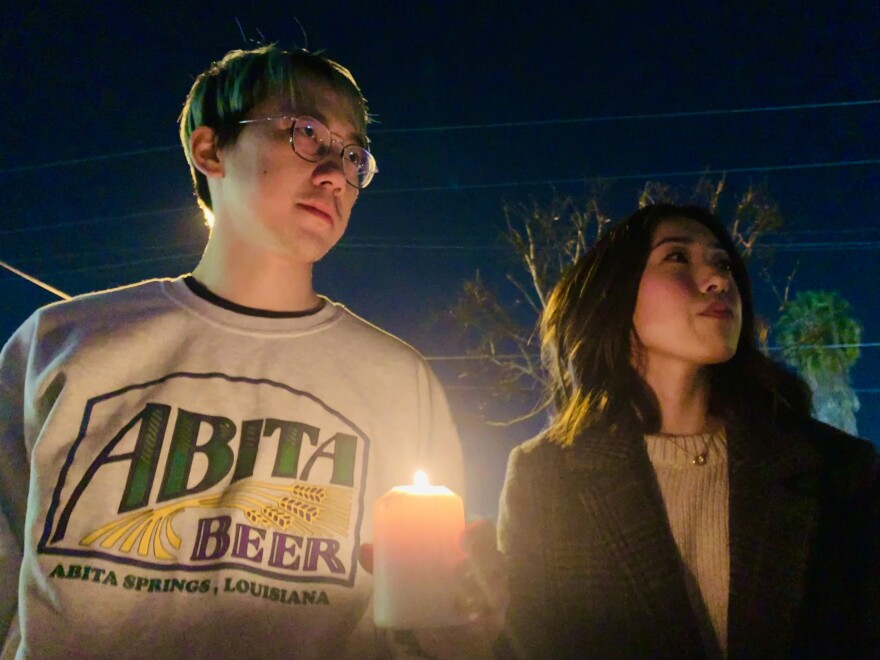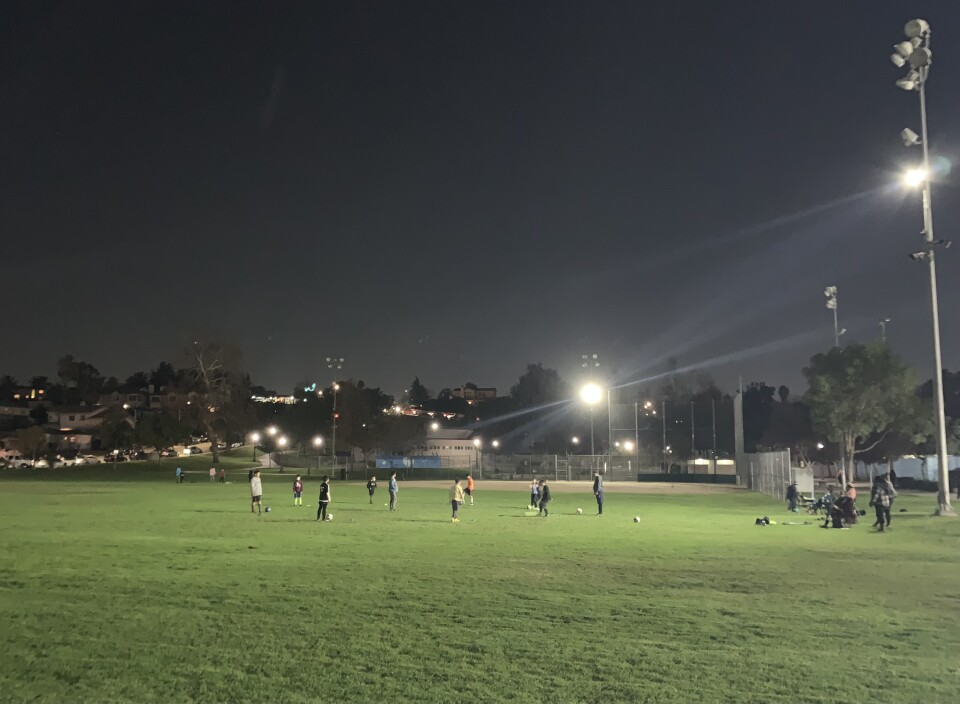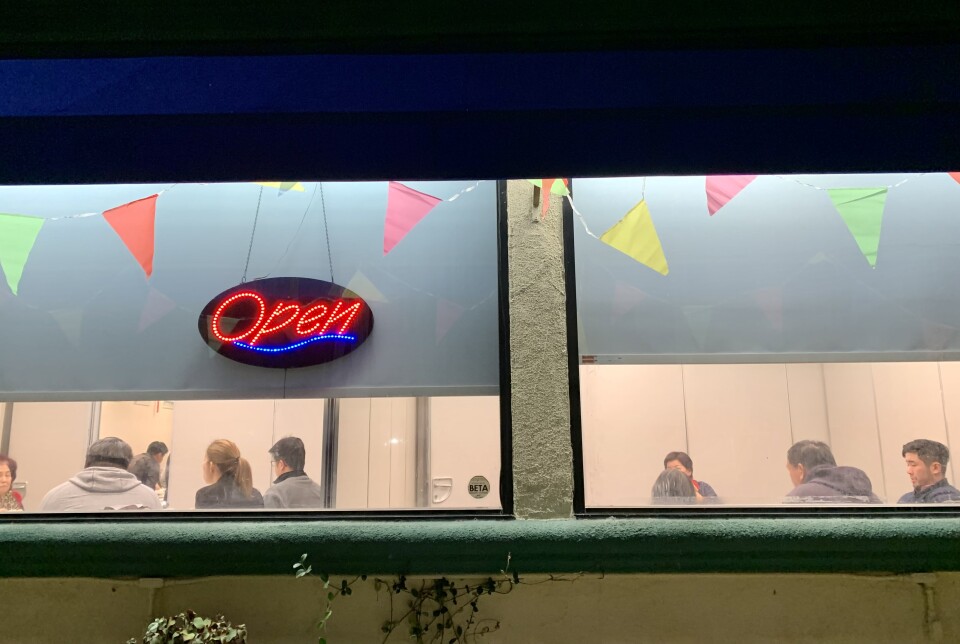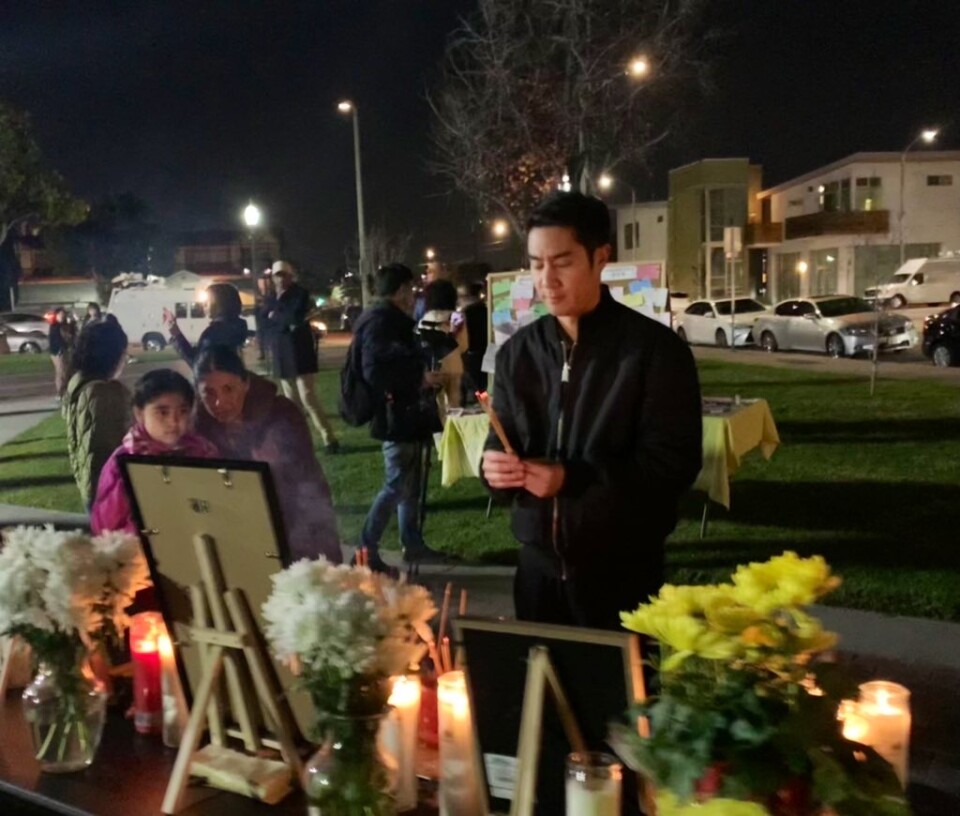Truth matters. Community matters. Your support makes both possible. LAist is one of the few places where news remains independent and free from political and corporate influence. Stand up for truth and for LAist. Make your tax-deductible donation now.
Love for Monterey Park Burns Bright After Shooting Tragedy

This happens with every mass shooting outside a major city. A place many people have never heard of lands in the public consciousness as headlines blare death counts and TV cameras capture flashing lights and police tape.
Uvalde. Parkland. Aurora.
And now Monterey Park. And May Paolim said that breaks her heart.
“Hopefully, people will learn more about our city than just about this event,” she said.
If Paolim could tell people what she loves about her city, it’s this: Monterey Park is where her Chinese immigrant parents decided to build their lives in the 1970's amid rolling hills and sun-drenched shopping plazas selling everything from fresh mooncakes to bird’s nest strips.
Listen to a Code Switch episode about this community
At night, it’s where older immigrants glide across a ballroom dance floor, kids dribble soccer balls at the city park blocks away, and restaurants turning out every regional Chinese cuisine you can name glow from within.

And it’s a place Paolim couldn’t wait to leave as a young woman — but where she is now raising her teenage son, swaddled by a patchwork of family and friends.
“It's just a place that's an anchor,” Paolim said. “I never thought I would be back. But I'm back.”
It’s been a little over a week since a gunman attacked the Star Ballroom Dance Studio, killing 11 people and injuring nine. Shock and grief coursed through the Asian American community that has only been compounded by the attack days later on immigrant farmworkers in Half Moon Bay.
Monterey Park, the first city in the U.S. to have an Asian majority, holds a special place in the hearts not just of long-time residents but a diaspora that grew up outside the San Gabriel Valley.
There's only a few places on earth that feel like home to me, where I can go around and see that there are people like me. Monterey Park and the SGV area is one of them.
Steven Lim, a YouTube personality, said he often visited Monterey Park after first moving to L.A. so he could buy groceries and boba and “recapture all of that culture that I missed out on” as a Chinese American kid growing up in Cincinnati.
“There's only a few places on earth that feel like home to me, where I can go around and see that there are people like me,” Lim said. “Monterey Park and the SGV area is one of them.”

Lim attended a candlelight vigil outside the Star Dance studio last week, joined by a group of friends that included Jason Y. Lee, who is Korean American and originally from Overland Park, Kan.
“It’s funny, growing up in a very majority-white state, I think you do so much to hide your identity as an Asian American,” Lee said. “Coming to somewhere like [Monterey Park], you start to recognize how special your culture is, and how proud you are to be Asian American.”
The city’s renown outside of southern California began to grow in the ‘70s and ‘80s as waves of immigrants from Taiwan, Hong Kong and China started to set down roots in the city, just a 15-minute drive from L.A.’s Chinatown.

A confluence of events sped up the demographic change. The federal government eased immigration restrictions in the mid-’60s, so it became easier for people from countries outside of Europe to move to the U.S.
The liberalization of immigration laws coincided with rising geopolitical tensions in East Asia that had Taiwanese and Hong Kongers who viewed China as a threat looking to the U.S. as an escape hatch.
So many Taiwanese moved to Monterey Park that the city became known as “Little Taipei.” Entrepreneurs and real estate agents also heavily marketed the town to affluent Chinese as a coveted destination. The developer Fred Hsieh famously sold Monterey Park as the “Chinese Beverly Hills” in Chinese-language dailies that circulated in the U.S. and beyond.
By the mid-’90s, more than half of Monterey Park’s population was Asian and a chain reaction had begun in the San Gabriel Valley. Today, there are nine other Asian-majority cities in the area where culture and commerce flow seamlessly across city limits.

Some cities are wealthier, more manicured or have trendier shops, but Monterey Park still burns bright from within this constellation.
The city is the place that produced the country's first Chinese American woman mayor, Lily Lee Chen, and the first Chinese American woman to join Congress, Judy Chu.
To this day, it's a landing spot for many new immigrants, including those from Vietnam, Cambodia and Thailand. No English is necessary to get by in Monterey Park, where major banks post Chinese signage.
The area is also drawing back second-generation Asian Americans who are now in their 20s and 30s.
Wylie Kyi, who was born in Monterey Park to Chinese immigrants, returned to the area after working in tech in the Bay Area, Phoenix, and Taiwan. He now lives in Rosemead, another Asian-majority city next door to Monterey Park.
“The San Gabriel Valley is my home now,” Kyi said. “My family's here. I hope to make it a big part of the next many years.”
His brother Wilson is back too, after bouncing around to places like Boston, Mexico and New York.
“We bring ourselves, our experience from other places, and hopefully, somehow, we can pay back and share our experience in different ways,” Kyi said.

For May Paolim, coming home to Monterey Park was itself a gift. Paolim, a business consultant, reconnected with childhood friends who were sending their kids to the same public schools they once attended. Living in her hometown also let her look after her 91-year-old mother alongside her two sisters.
The pandemic prompted her sisters and mother to actually move in with Paolim and her son — and they have all stayed together since.
Paolim’s son, who recently started attending East L.A. College in Monterey Park, has no interest in getting his own place, she said.
“He has a whole support system of Asian ladies,” she laughed. “He’s very well taken care of.”
This is the Monterey Park Paolim knows, and she hopes others will get to know, even through tragedy.
Updated February 1, 2023 at 10:54 AM PST
This story updated with additional photos and a map.










